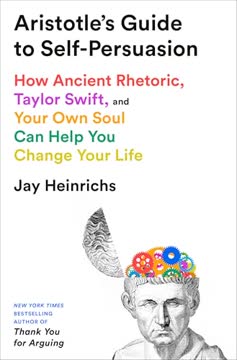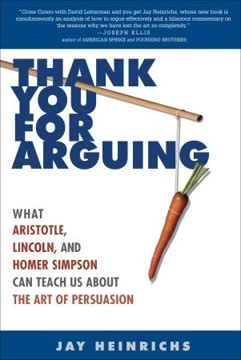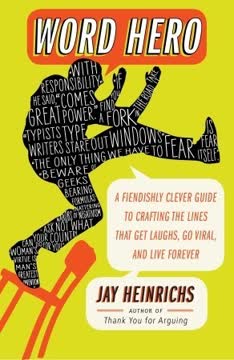Key Takeaways
1. Rhetoric: The Useful Art of Soul Bending
Self-persuasion has an audience after all. It’s not you, exactly; not the you who scarfs potato chips and binge-watches streaming shows. It’s your very own soul.
Unleash inner power. This book re-imagines rhetoric, the ancient art of persuasion, not just for influencing others but for transforming oneself. Historically, rhetoric empowered orators to sway masses and build empires, but its deepest magic lies in "psychagogia," or "soul moving"—what the Romans called "soul bending." This involves directing persuasive techniques at your own "Aristotelian soul," a superior version of yourself that embodies your truest character and reason for being.
Beyond external influence. Unlike traditional persuasion, which often disguises its intent, self-persuasion works because the "manipulator" and "manipulatee" are the same person. The goal is to align your daily actions with your higher self, overcoming inertia, bad habits, and self-doubt. This process grants you agency, shifting your character from victim to protagonist, and allowing you to take control of your brain and circumstances.
Ancient wisdom, modern relevance. Though rooted in the wisdom of figures like Aristotle and the Sophists, these tools remain profoundly relevant. They address universal human nature, helping individuals master new skills, overcome fears, adjust routines, and find happiness. The author's own journey from a "stuck" and "grouchy" individual to an enthusiastic outdoorsman serves as a testament to rhetoric's transformative power.
2. Connect with Your Noble Soul
Your Aristotelian soul is your you-est you, the Michael Jackson man-in-the-mirror.
Identify your true self. Aristotle viewed the soul not as an immortal spirit, but as the deepest identity and ultimate motive of a person—the "you-ness" that senses and responds. Successful self-persuasion hinges on bridging the gap between your day-to-day self (the one prone to indulgence) and this superior, noble soul. This internal audience is key to believing in yourself and making lasting change.
Embrace noble traits. Aristotle defined a good soul by virtues like justice, courage, restraint, magnanimity, liberality, prudence, and wisdom. While human actions rarely perfectly reflect these ideals, recognizing your soul's potential helps you strive for them. Cognitive dissonance, the unpleasant feeling when actions contradict beliefs, signals this gap, prompting self-persuasion to restore harmony.
Cultivate self-trust (Ethos). Rhetoric's most powerful appeal is ethos, the impression of character. To persuade your soul, you must project an ethos of caring (eunoia), practical wisdom (phronesis), and virtue (arete).
- Caring: Show your soul its best interests are at heart, practicing "philos"—unwavering loyalty.
- Craft: Convince your soul of your capability, leveraging inherent strengths like fast learning or stubbornness.
- Cause: Align your actions with your soul's noble purpose, making choices that reflect your deepest values.
3. Seize Opportunity in Chaos (Kairos)
The most confusing times also happen to be the most liminal, lying between more settled periods in our lives.
Chaos as opportunity. Life is inherently chaotic, filled with unexpected changes and disruptions. Instead of viewing chaos as mere confusion, the ancients, particularly the Sophists, saw it as an "opening"—a doorway or window for possibility. These "liminal" periods, like a broken leg or a job loss, are soul tests that determine your response and reveal your character.
Pluck the day (Carpe Diem). The concept of "kairos" is the art of grabbing a moment at its ripest, striking while the iron is hot. It's about recognizing and acting on opportunities that arise in these in-between spaces, often when norms no longer apply.
- Serendipity: Happy chance occurrences often emerge from chaotic situations, as seen in "The Three Princes of Serendib" who turned banishment into advisory roles.
- Crisis as decision: The Greek "krisis" means "decision," highlighting that chaotic moments are precisely when choices must be made.
Deliberate for the future. In chaotic times, language often defaults to present-tense panic ("What's happening?") or past-tense blame ("Who did this?"). Aristotle's "deliberative rhetoric" shifts focus to the future, asking "What should we do to get the best outcome?" This forward-looking approach empowers you to make choices that turn misfortune into advantage, fostering agency and overcoming nostalgia for a past that no longer exists.
4. Inspire Yourself with Hyperbolic Goals
To throw beyond. The word just begs us to cast an impossibility into the future and then run after it like a dog playing fetch.
Aim beyond the possible. Traditional self-help often sets low, immediate goals, leading to quick but unsustainable results. Hyperbole, derived from the Greek "to throw or cast beyond," offers a radical alternative: setting a ridiculously hard, seemingly impossible goal. This "capital-H Hyperbole" injects moral energy and motivation into your life, even if the goal itself is just beyond reach.
The "Moon Shot" effect. President Kennedy's challenge to land a man on the moon within a decade, despite lacking the technology, exemplifies Hyperbole. The goal itself, "not because they are easy but because they are hard," served to organize and measure America's best energies. Similarly, a personal Hyperbole, like running your age up a mountain, transforms you from a "dabbling dilettante" to a "Hyperbolist" – someone who chases the impossible.
Elements of a grand Hyperbole:
- Risk: It entails some risk, if only of embarrassment.
- Novelty: It promises something novel and interesting, often with a quirky twist.
- Originality: It constitutes a "first of some sort," making you unique in a category.
- Climax: It ideally culminates in a dramatic moment (e.g., on your birthday).
This approach makes the effort of self-improvement not just tolerable, but exciting, as the pursuit itself elevates your ethos and bends your soul.
5. Master Your Mood and Beliefs (Pathos & Logos)
The listener always empathizes with the man who speaks emotively, even if he is talking nonsense.
Control your emotional state (Pathos). Aristotle understood that emotions (appetite) are powerful motivators. To be persuadable, even by yourself, you need "cognitive ease"—a happy, carefree, and empowered state.
- Confidence: Cultivate a feeling of power by reframing yourself as strong, rich, and popular, regardless of external circumstances.
- Shame: Use shame as a "soul detector"; feeling it when alone signals a virtuous soul reacting to ignoble behavior.
- Fear: Recognize fear as temporary; analyze its origins to tamp down its power.
- Envy: Turn envy into a positive motivator, seeing rivals (even your own soul) as competitive challenges.
- Laughter: Employ gentle self-deprecating humor to ease self-judgment and make daunting tasks seem less intimidating.
- Desire Reversal: Turn long-term goals into immediate wants by focusing on the desired outcome (e.g., visualize a fit body instead of a donut).
- Charm (Charisma): Develop charisma by proving you can suffer well or by highlighting accomplishments, creating a "placebo effect" for your soul.
- Catharsis: Purify emotions by empathizing with others' suffering (e.g., through sad songs), restoring emotional balance.
Shape your reality (Logos). Logic, in rhetoric, is about what you get yourself to believe.
- Induction: Examine facts through Aristotle's four causes (material, efficient, formal, final) to understand reality clearly and avoid panic (e.g., analyzing news to see if a single event is a trend).
- Deduction (Enthymeme): Use Aristotle's two-part enthymeme (proof + conclusion) to reinforce positive self-beliefs. "I'm a good learner, so I can do this new job." The conclusion strengthens the belief, creating a virtuous cycle.
- Framing: Redefine issues to gain the "high ground." Broaden the issue, redefine terms (e.g., pain as "suffering"), and simplify/personalize it.
- Useful Fallacies: Employ "happy fallacies" like post hoc (attributing success to a prior action), false analogy (applying one skill to a seemingly unrelated one), hasty generalization (turning a single success into a rule), antecedent (past patterns predict future), and appeal to popularity (mimicking admired people) to bypass rational skepticism and build belief.
6. Cultivate Habits with Lure & Ramp
Happiness does not lie in amusement; it would be strange if one were to take trouble and suffer hardship all one’s life in order to amuse oneself.
Choicelessness for happiness. Aristotle believed that true happiness comes from aligning wishes with the means to achieve them, often by limiting the number of choices we must make. Habits are key to this "choicelessness," putting much of life on autopilot and reducing stress. This is the "Tortoise Method"—slow, persistent progress.
The Lure & Ramp strategy. To acquire good habits, make the end goal wonderfully desirable (the "lure") and the means to reach it seem easily doable (the "ramp").
- Lure: Reframe your goal as irresistibly attractive (e.g., a dawn jog with an attractive person, or the applause of a crowd for a musical performance).
- Ramp: Break down daunting tasks into tiny, no-brainer steps ("chunking"). For example, instead of "run a marathon," think "just put on my running shorts." Each small step feels easy, building momentum.
Create your own time zone. A common obstacle to new habits is lack of time. The author's "Jaylight Saving" method involved shifting his sleep schedule to gain extra early morning hours, effectively creating a personal time zone. This seemingly masochistic act, initially filled with procrastination, eventually became a natural, productive routine. This demonstrates how consistent, small efforts, even if initially uncomfortable, can transform into ingrained habits that lead to significant achievements.
7. Charm Your Mind with Words and Tropes
Certain words, uttered in a precise way, could produce mystical effects.
Words as magic. Ancient mystics used "charms"—incantations with specific rhythms—to ward off evil or induce states. Similarly, rhetoric employs "schemes" (figures) and "tropes" (turnings) to warp perception and bend the soul. These are language's "actors," playing pretend to make the impossible seem possible. Repetition of these "charms" literally changes the brain, strengthening neural connections and making beliefs feel like universal truths.
Craft your personal slogans (Paeans). The "paean," a rhythmic chant, was used by ancient soldiers to stir courage. Modern slogans like "Just Do It" or "Melts in your mouth, not in your hand" use similar rhythms to create powerful, sticky commands.
- Beethoven beat: Short-short-short-long rhythms (e.g., "First the nutrition, then the junk").
- Antithesis: "Do it like a hero, not like a chump!"
These simple, repeated phrases can lubricate habits and enforce belief, even if they initially sound silly.
Bend reality with Tropes:
- Metaphor: "To carry over" a characteristic, making one thing seem like another (e.g., a jog becomes an "escape"). It "puts the subject before our eyes," making abstract goals vivid.
- Irony: Saying one thing while meaning the opposite. Initially, using ironic self-affirmations can ease discomfort, gradually making the positive statement feel true (e.g., "Refreshing!" after a hard workout).
- Metonymy: Connecting things that share a trait, container, or action, making one stand for the other (e.g., "hitting the bottle" for drinking whiskey). "Pidgin thinking" simplifies complex situations to find essential connections and opportunities (e.g., a jeweler becoming a "plumber for broken jewels").
- Synecdoche: A sample represents the whole (e.g., "leg day" for a full lower-body workout). This makes daunting tasks seem like a single, manageable step ("Stone Soup Method").
8. Craft Your Heroic Narrative
The better the narrative, the more believable the character. Tell a heroic story, and we create a hero.
Story begets belief. Humans are compelled by stories more than facts. A well-constructed narrative, even if fictional, can trump data and shape belief. To define your own character and motivate yourself, you must tell a compelling story about your life, past and future. This involves more than "and-then" sequences; it requires "connections" where one event believably causes the next.
Tying and untying (Desis & Lusis). Aristotle's plot theory describes stories as a series of complications ("tying") and resolutions ("untying"). The hero gets tangled in problems, tries to untangle them, leading to new knots. This process reveals the character's soul and makes the narrative compelling. By framing your own life's challenges as "knots" to be untied, you create a sense of inevitable progression and personal growth.
The Hero's Journey for self-transformation. This classic plot structure can be applied to your own life's changes:
- Catalyst: An inciting incident (e.g., job loss, dawning unhappiness) forces you out of your familiar world.
- Break into Two: You accept the call to action, committing to a new path.
- Midpoint: A false victory, where things seem resolved, but deeper challenges await.
- All Is Lost: The world collapses, a "whiff of death" moment, where defeat seems certain.
- Break into Three: The ultimate solution emerges, the hero triumphs, gaining wisdom.
By casting yourself as the hero in your own "major motion picture," complete with "dramatic goodies" like flaws, "Save the Cat" moments, and deadlines, you create a compelling self-narrative that fuels belief in your own heroism and a happy ending.
9. Experiment and Embrace the Process
And if one thing is possible, then so is the other; and if the harder of a pair is possible, then so is the easier.
The ultimate test. The author's personal "Hyperbole"—running his age (58 minutes) up Mount Moosilauke on his birthday—serves as a grand experiment for all the rhetorical tools. This seemingly "stupid and pointless feat" became a crucible for self-persuasion, demonstrating how theoretical concepts translate into tangible results.
Applying the tools in practice:
- Kairos: The birthday deadline and the mountain's chaotic conditions (mud, reroutes) became opportunities.
- Ethos: The author's self-perception shifted from "bum on the couch" to "perfectly tuned athletic machine" through decorum and self-talk.
- Pathos: Pain from medical injections was reframed as "training to suffer," making it tolerable and even "cool."
- Logos: Charms and paeans like "My legs love rocks, I flow up rocks" were repeated until they felt true, literally changing the brain's perception of reality.
- Habits: The "Tortoise Method" and "Jaylight Saving" created consistent training time and routines.
- Narrative: The entire journey was framed as a heroic tale, with "beats" like "Focus" and "Dance" for different sections of the climb.
Triumph in the unexpected. Despite the grueling effort and initial doubts, the author not only achieved his Hyperbole (54:53) but experienced a profound sense of joy and connection, akin to a "psychedelic" experience. This demonstrated that the true reward wasn't just the goal, but the transformative process itself, proving that self-manipulation through rhetoric can lead to unexpected happiness and a deeper alignment with one's soul.
10. Find Joy in Being Fully Human
Happiness does not lie in amusement; it would be strange if one were to take trouble and suffer hardship all one’s life in order to amuse oneself.
Happiness as a trifecta. Aristotle defined happiness (eudaimonia) as a combination of fortune (inherited advantages), functioning (personal management of circumstances), and framing (positive interpretation). It's not merely amusement, but a deep alignment of daily actions with one's soul. The giggling Dalai Lama, despite losing his homeland, exemplified this, suggesting happiness is an achievable state regardless of external hardship.
Functioning: The better angel. While fate (genes, circumstances) deals our hand, our "eudaimonia" depends on how we play our cards. Aristotle believed our actions, especially daily habits, can bend our inner "daimon" (spirit) towards the angelic. This continuous shaping of self through behavior is not just a path to happiness; it is happiness.
Framing: The fourfold cure-all. Epicureans offered a "tetrapharmakos"—a fourfold rhetorical medicine to cure mental diseases:
- Fear of God's punishment: Gods are self-absorbed; focus on personal responsibility for happiness.
- Fear of death: "As long as you and I exist, death does not. And once we die, we no longer exist, so death literally has nothing to do with us."
- Fear of pain: Reframe pain as "suffering"—a skill to be mastered, not a disease to be avoided.
- Anxiety about earthly goods: Distinguish between true needs (easy to obtain) and vain appetites (lead to anxiety).
This philosophical approach, combined with the "thaumaston" (sublime wonder) of moments like a double rainbow, allows for a profound, lasting joy.
The why of being human. Ultimately, the book argues that the unique power of words makes us human. Unlike other species, we tell stories, seek meaning, and can "bend our souls" through rhetoric. This self-mastery, achieved through the disciplined use of words, is the secret to the good life—the happiest life—by being "as human as humanly possible." In an age of AI, understanding and wielding the power of words becomes paramount to preserving and enhancing our humanity.
Last updated:
FAQ
1. What is Aristotle's Guide to Self-Persuasion by Jay Heinrichs about?
- Ancient Rhetoric for Change: The book explores how Aristotle’s ancient rhetorical techniques can be used for self-persuasion, not just to influence others but to motivate and transform oneself.
- Soul as Audience: Heinrichs introduces the idea of persuading your own “soul”—your truest, noblest self—to align daily actions with higher values and ambitions.
- Modern and Practical: The book blends classical philosophy with modern examples, including Taylor Swift, to provide actionable tools for personal growth and habit change.
2. Why should I read Aristotle's Guide to Self-Persuasion by Jay Heinrichs?
- Unique Philosophical Approach: Unlike typical self-help books, it grounds personal change in the classical art of rhetoric, offering a fresh, time-tested framework for self-improvement.
- Comprehensive, Actionable Tools: Heinrichs provides a wide range of rhetorical techniques—ethos, pathos, logos, framing, and more—that can be immediately applied to reshape mindset and behavior.
- Empowerment and Agency: The book promises to help readers gain agency over their lives by teaching them to “bend their souls,” turning internal conflict into motivation and resilience.
3. What are the key takeaways from Aristotle's Guide to Self-Persuasion by Jay Heinrichs?
- Self-Persuasion as Core Skill: Rhetoric is not just for others; it’s a powerful tool for persuading yourself to adopt better habits and pursue ambitious goals.
- Soul Alignment: True happiness and change come from aligning your daily self with your noble soul through habits, narrative, and reframing.
- Practical Rhetorical Methods: Techniques like Lure & Ramp, the Tortoise Method, and crafting personal paeans (charms) are central to building courage, forming habits, and motivating action.
- Framing and Hyperbole: Reframing challenges and setting “Hyperbolic” goals are essential for overcoming low aspiration and injecting excitement into personal growth.
4. What is the concept of the “soul” in Aristotle's Guide to Self-Persuasion by Jay Heinrichs?
- Aristotelian Soul Defined: The soul is your highest, most rational and virtuous self—not a religious spirit, but your deepest identity and truest character.
- Audience for Self-Persuasion: Your soul acts as the internal audience you must persuade, helping you align daily actions with your noblest motives.
- Virtues and Traits: Heinrichs describes the soul as just, courageous, wise, and magnanimous, and the gap between your soul and daily self is the source of unhappiness and the target for change.
5. How does Jay Heinrichs explain the role of habits in self-persuasion and happiness in Aristotle's Guide to Self-Persuasion?
- Habits as Choicelessness: Habits reduce the mental burden of constant decision-making, putting beneficial behaviors on autopilot and aligning actions with the soul’s desires.
- Gradual Habit Building: The Tortoise Method advocates starting with small, easy steps and building up over time, making change sustainable and less daunting.
- Virtues Through Habits: Courage (embracing discomfort) and temperance (avoiding temptation) are supported by steady habits, leading to lasting happiness.
6. What are the key rhetorical tools and methods taught in Aristotle's Guide to Self-Persuasion by Jay Heinrichs?
- Lure & Ramp Technique: Make a goal highly desirable (the lure) and break it into small, manageable steps (the ramp) to reduce resistance and ease the path to change.
- Tortoise Method: Emphasizes slow, steady progress by starting with the easiest steps and gradually increasing effort, inspired by Aesop’s fable and Aristotle’s ideas.
- Figures and Tropes: Use rhythmic language (figures like paeans) and analogical thinking (tropes such as metaphor and metonymy) as “charms” to reframe reality and embed new beliefs.
7. How does Aristotle's Guide to Self-Persuasion by Jay Heinrichs use storytelling and narrative for self-change?
- Narrative Shapes Identity: Crafting a compelling personal story with connected events reveals and shapes your soul, making your self-image more believable and motivating.
- Tying and Untying Knots: The book teaches how to structure stories with problems and solutions, reflecting personal growth and heroic character development.
- Hero’s Journey Framework: Using storytelling beats like the hero’s journey, readers can frame their goals as epic quests, increasing motivation and cognitive ease.
8. What is the significance of “charms” and “paeans” in Aristotle's Guide to Self-Persuasion by Jay Heinrichs?
- Charms as Mental Spells: Charms are rhythmic or patterned phrases repeated often enough to become ingrained beliefs, motivating and reinforcing habits.
- Paeans as War Cries: Short, catchy slogans (e.g., “Just Do It”) can be personalized to boost courage and focus, inspired by ancient Greek chants.
- Neuroscience Backing: Repetition of these phrases strengthens neural connections, embedding new realities into the brain and effectively “bending the soul.”
9. How does Aristotle's Guide to Self-Persuasion by Jay Heinrichs explain the concepts of ethos, pathos, and logos for self-persuasion?
- Ethos (Character Projection): Projecting caring, craft, and cause to your own soul builds trust and credibility, helping close the gap between your daily self and your noble self.
- Pathos (Emotion Management): Managing emotions and moods creates a receptive state for self-persuasion, with positive moods increasing cognitive ease and motivation.
- Logos (Reasoning and Belief): Using induction, deduction, and the enthymeme (belief-based syllogism) helps reinforce positive self-beliefs and rational decision-making.
10. What is “framing” in Aristotle's Guide to Self-Persuasion by Jay Heinrichs, and how can it redefine your life?
- Definition and Power: Framing is the act of defining or redefining an issue to change its meaning and influence perception, giving you control over how you see your life and challenges.
- Examples and Fallacies: The book uses real-world examples and logical fallacies as tools to reframe reality in beneficial ways.
- Reframing Suffering: Pain and obstacles can be reframed as skills or debts owed, reducing self-pity and increasing resilience.
11. What is the “Hyperbole” method in Aristotle's Guide to Self-Persuasion by Jay Heinrichs, and how does it motivate change?
- Definition and Etymology: Hyperbole means “to throw beyond” and involves setting goals that seem just beyond the possible, inspiring grand ambition and motivation.
- Elements of Hyperbolic Goals: These goals are risky, novel, and culminate in a dramatic moment, pushing you to extraordinary effort and growth.
- Psychological Effect: Hyperbolic goals inject moral energy and excitement, making the pursuit itself motivating even if the goal seems impossible.
12. How does Aristotle's Guide to Self-Persuasion by Jay Heinrichs connect rhetoric, reality, and happiness?
- Rhetoric Shapes Perception: The book discusses how rhetoric creates shared impressions of reality, making belief malleable even if truth is fixed.
- Soul Alignment for Happiness: True happiness (eudaimonia) comes from aligning daily actions with the soul’s virtues—justice, courage, wisdom—through habits and reframing.
- Purpose of Self-Persuasion: The ultimate goal is self-mastery, using language and rhetoric to connect with your noble soul and live a life of virtue and purpose, fulfilling Aristotle’s vision of the good life.
Review Summary
Aristotle's Guide to Self-Persuasion receives positive reviews, with readers praising its unique approach to self-improvement using ancient philosophy and rhetoric. The book explores Aristotle's concept of the "soul" as a tool for ethical self-persuasion, drawing parallels to modern psychology. While some find it challenging to follow at times, readers appreciate the author's wit, personal anecdotes, and relevant examples. The book is described as thought-provoking and inspiring, offering practical tools for aligning actions with one's higher identity.
Similar Books
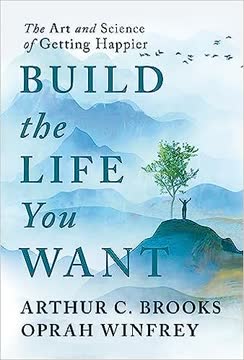
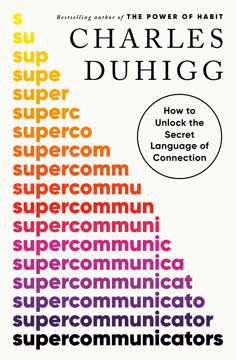
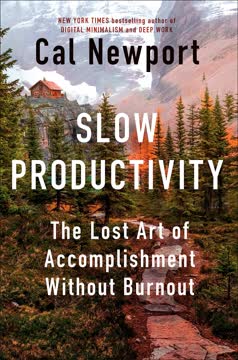

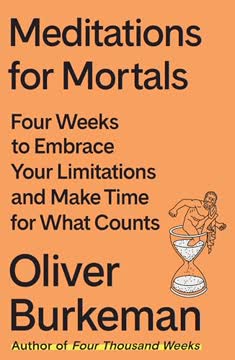
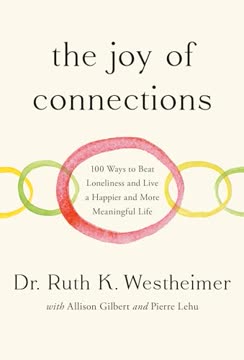

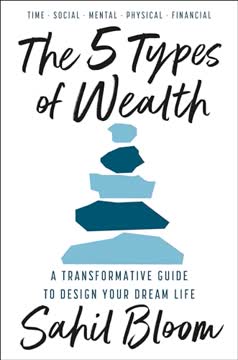
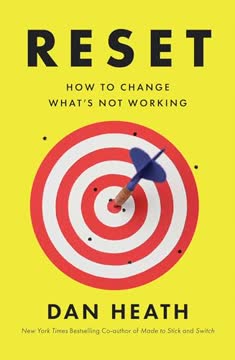

Download PDF
Download EPUB
.epub digital book format is ideal for reading ebooks on phones, tablets, and e-readers.
